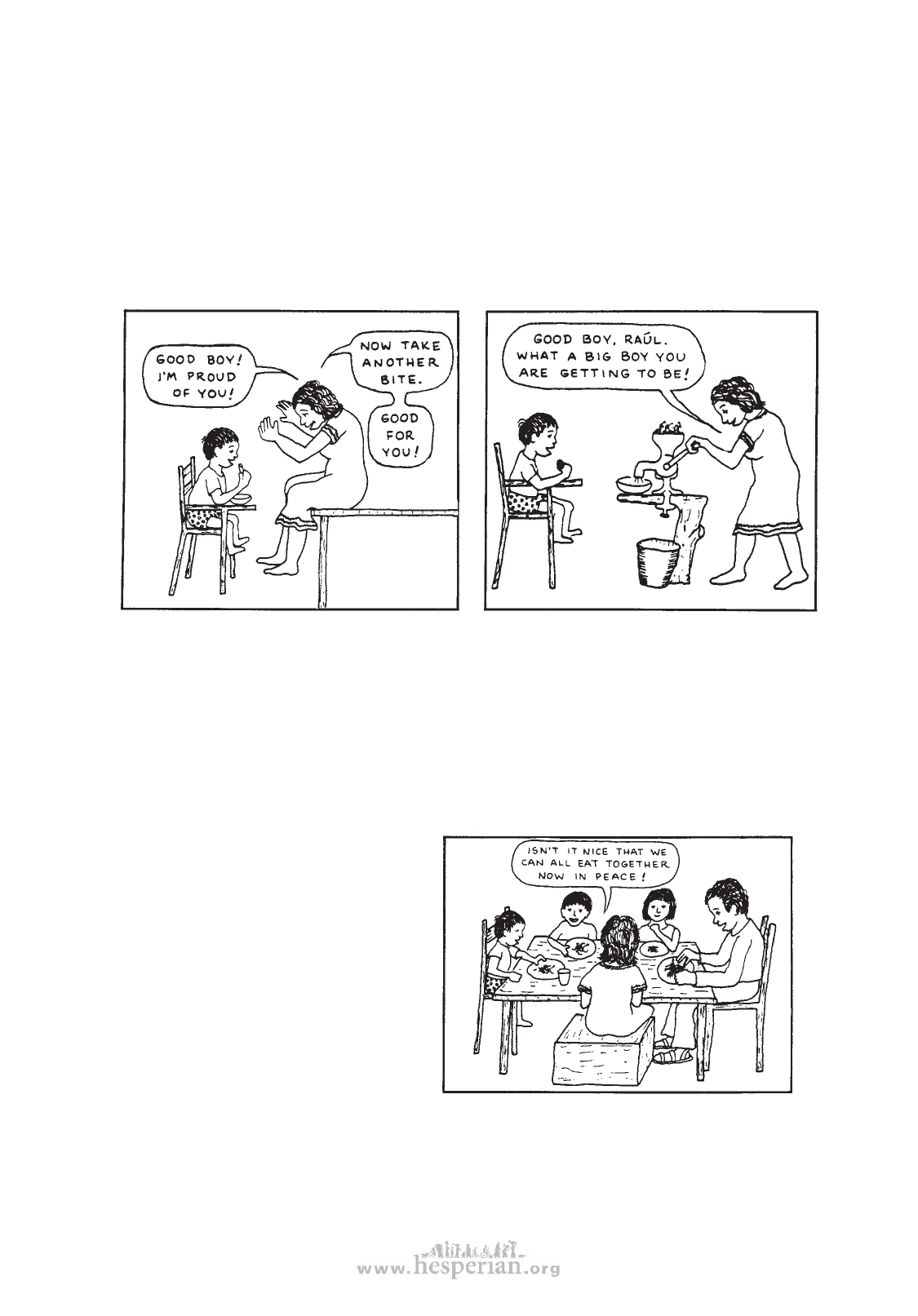
LEARNING AND BEHAVIOR
For example, it would be too much to expect Raúl to suddenly eat by himself quietly when
mother is busy with the other children. Instead, mother can help him work toward this goal
little by little.
353
A possible first step is for Raúl’s
mother to give him his food after the
other children have left for school.
This way she can stay close to him as
he eats it.
The next step might be for mother to do
her work while Raúl eats, but to keep
talking with him and praising him when
he does well.
In this way, Raúl will learn that eating by himself does not mean being left alone, but gets
more attention from his mother than does throwing food.
Step 5. After the child’s improved behavior has become a habit, gradually move toward a
more natural way of relating to the child.
To help the child improve his
behavior, the ‘behavioral approach’
just described often works well.
Your responses to your child’s acts
are carefully planned and consistent.
However, such a controlled approach
to person-to-person relationships is
not natural. Parents and children, like
other people, need to learn to relate to
each other not according to a plan, or
because each action earns a reward,
but because they enjoy making each
other happy.
Therefore, the last step, after the child’s new behavior has been established, is to
gradually decrease immediate rewards while sharing the pleasure of an improved
relationship.
disabled village children